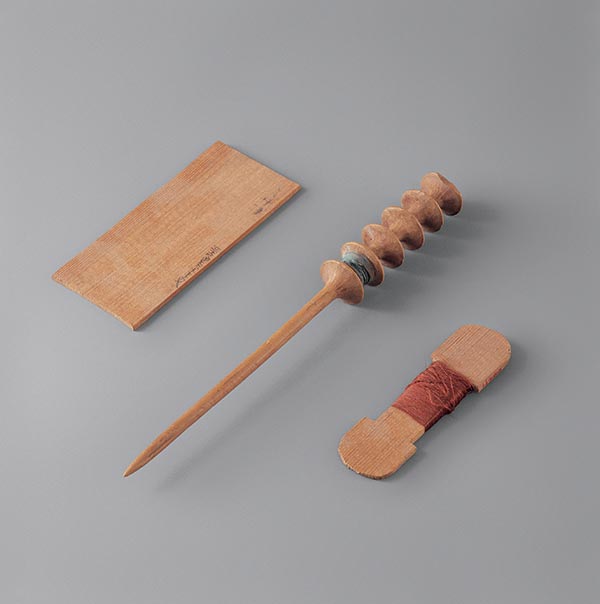 |
|
Han-dynasty wooden bobbins unearthed in Gansu, provided by Gansu Provincial Museum [Photo provided to China Daily] |
Rong Xinjiang, one of China's leading researchers on the ancient Silk Road, says that during the fifth century in Gaochang, a small agricultural kingdom sitting inside the Turpan Depression in eastern Xinjiang, household taxation was imposed in the form of silk.
"This is a strong indicator that by that time the area was already able to produce its own silk," he said. "Although major silk-producing centers were still located in the Chinese heartland more than a thousand kilometers further east, the string of countries and communities along the Silk Road had definitely picked up one loose thread or two and started weaving their own silk story, informed by the rich indigenous culture."
Legends abound regarding the westward transmission of sericulture and silk fabric making techniques. One appeared in the Records of Xiyu During The Time of Tang, a twelve-volume travelogue reputed to have been dictated by Xuanzang, a Buddhist monk, who, in his quest for religious scriptures, traveled all the way from Xi'an to India and then back between 628 and 645. Most of his journey was along the Silk Road, which throughout its history had been a major conduit for the spread of religion.
"According to Xuanzang's book, the ruler of a Xiyu kingdom sent an envoy to ask for silkworm eggs from 'the country in the east' but was refused," Zhao said. "Undeterred, the king proposed to marry a princess from that country. This time, he was given the nod. The bride was then secretly told by the envoy that the land she would be marrying into had no silkworm. 'Bring some so that we can make your own clothes there,' the princess was told, and obliged, without the knowledge of her emperor. The secret was no more.